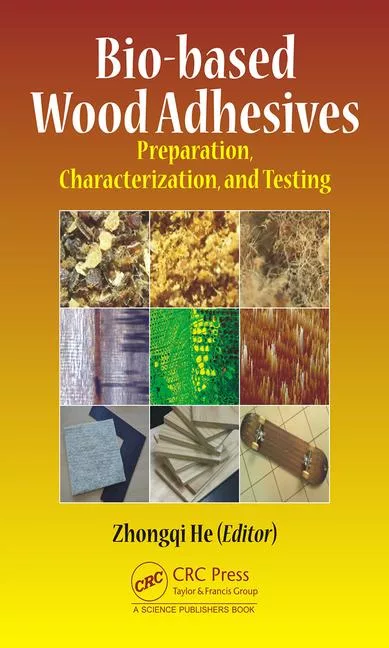Exploring a High-Performance, Bio-Based Feedstock for Adhesives and Sealants
Safe and produced from an annually renewable feedstock, isosorbide has a combination of properties that offers excellent potential for a range of CASE applications.

Better resistance to UV, abrasion, scratching, and impact. Better adhesion and improved properties for water-based formulation. The demands on today’s coatings, adhesives, sealants, and elastomers (CASE) create a long list of desirable properties for feedstocks. Safe and produced from an annually renewable feedstock, isosorbide features a combination of properties that offers excellent potential for a range of CASE applications.
Key Properties
Isosorbide is a plant starch-derived bicyclic diol with rich functionality for a range of applications in the packaging, CASE, and automotive sectors. Starch from annually renewable feedstocks is hydrolyzed to produce glucose, which is then converted to sorbitol and on to isosorbide by hydrogenation.
As a plant-based, sustainable feedstock with a carbon footprint of just 0.09 kg CO2/kg of product, isosorbide is a substitute for monomers such as bisphenol A, which has a carbon footprint around 60 times higher. In addition, isosorbide is non-toxic, non-carcinogenic, a non-endocrine disruptor, REACH compliant, and suitable for food contact and for the manufacture of cosmetics and pharmaceuticals. These attributes make the performance benefits of isosorbide of interest and value in a diverse range of applications.
Isosorbide can be incorporated alongside other monomers to modify the properties of, for example, polyethylene terephthalate (PET), polycarbonates (PC), polyurethanes (PU), and epoxy resins. When used in this way, it can enhance:
- Thermal properties (e.g., increasing the glass transition temperature, Tg)
- Chemical resistance to both water and organic solvents such as acetones and esters
- Optical performance (transparency and birefringence)
- UV resistance (reduced yellowing upon exposure to the sun)
- Mechanical properties (e.g., scratch, impact, and bending resistance)
- Adhesion
- Appearance (e.g., imparting high gloss)
Isosorbide can reduce the environmental burden associated with the use of existing materials. At the same time, it enables producers to maintain performance or even provide the potential for new performance profiles to meet the exacting requirements of different markets.
Industrial Applications
The CASE market is characterized by diversity, with products formulated specifically to meet precisely defined, sometimes unique applications. However, certain trends prevail across the industry, including the move away from petroleum-derived ingredients and the increasing use of water-based formulations to reduce volatile organic compound (VOC) emissions. Isosorbide combines sustainability with technical performance, with specific advantages depending on the application of interest.
Polyurethane Coatings
Polyurethanes (PUs) are made by reacting alcohols with two or more reactive hydroxyl groups per molecule (i.e., diols, triols, or polyols). 1, 4 butanediol (BDO) is one such alcohol that is routinely used as a chain extender to increase the molecular weight of the PU. Substituting BDO with isosorbide creates coatings with higher heat resistance, better adhesion, and improved impact and abrasion resistance. Switching from BDO to isosorbide increases the Tg of PUs made by reaction with isophorone diisocyanate (IPDI), thereby improving heat resistance. Impact resistance is also significantly improved.
Epoxy Resins
The most common commercial epoxy resins are made by reacting epichlorohydrin and bisphenol A to form diglycidyl ether (bisphenol A digylcidyl ether, BADGE), which is then reacted with an amine to form the resin. Isosorbide can be directly substituted for bisphenol A to make isosorbide-based digylcidyl ether to reduce toxicity and improve the quality of the finished product.
Isosorbide-based epoxies deliver an improved aspect, with a shiny gloss and better UV resistance than aromatic-based BADGE analogs. Appearance is further enhanced by the absence of the white haze that can appear with BADGE/amine systems in the presence of water; isosorbide-based epoxies are less sensitive to the classic amine carbonation phenomenon that produces this effect. Isosorbide epoxy derivatives can, in fact, be miscible and soluble with water. Just as with PUs, impact resistance is also improved, and isosorbide-based epoxy exhibits superior adhesion and deformation properties.
Displacing bisphenol A with isosorbide results in an epoxy resin with improved deformation properties. The superior adhesive properties of the isosorbide-based epoxy have also been demonstrated by comparative cross-cutter testing.
Looking Ahead
Isosorbide is a plant-based, sustainable monomer with a low carbon footprint and significant potential for a wide range of applications. Substituting isosorbide for existing petrochemical ingredients not only lightens the environmental impact of industrial polymers, it also drives up performance.
Advancements include new types of aerosol packaging, touchscreens with enhanced clarity and scratch resistance, and better adhesives with improved UV and impact resistance. These are just some of the products that isosorbide is already beginning to deliver as polymer chemists and formulators learn exactly what it can do.
For more information, visit www.roquette.com.
Looking for a reprint of this article?
From high-res PDFs to custom plaques, order your copy today!





